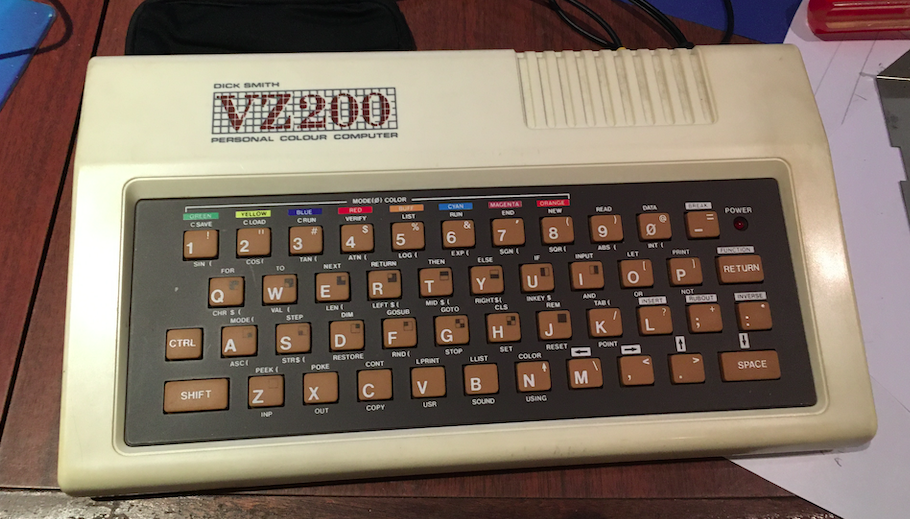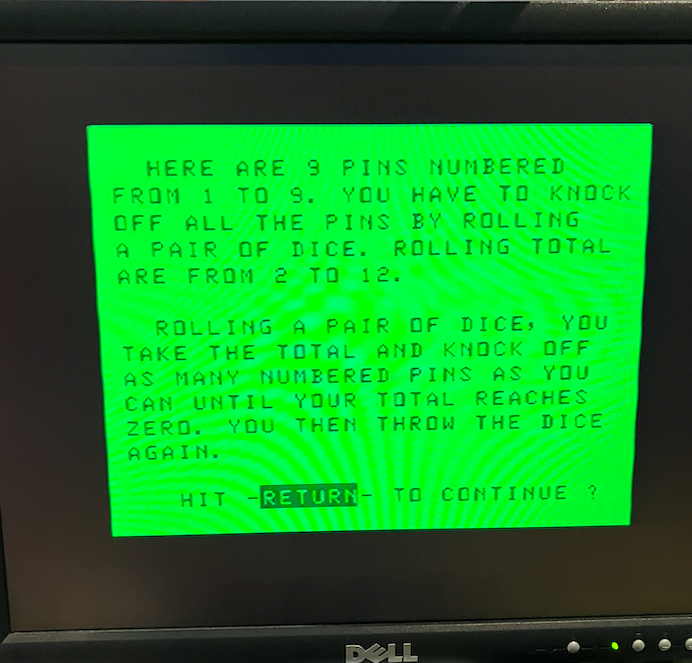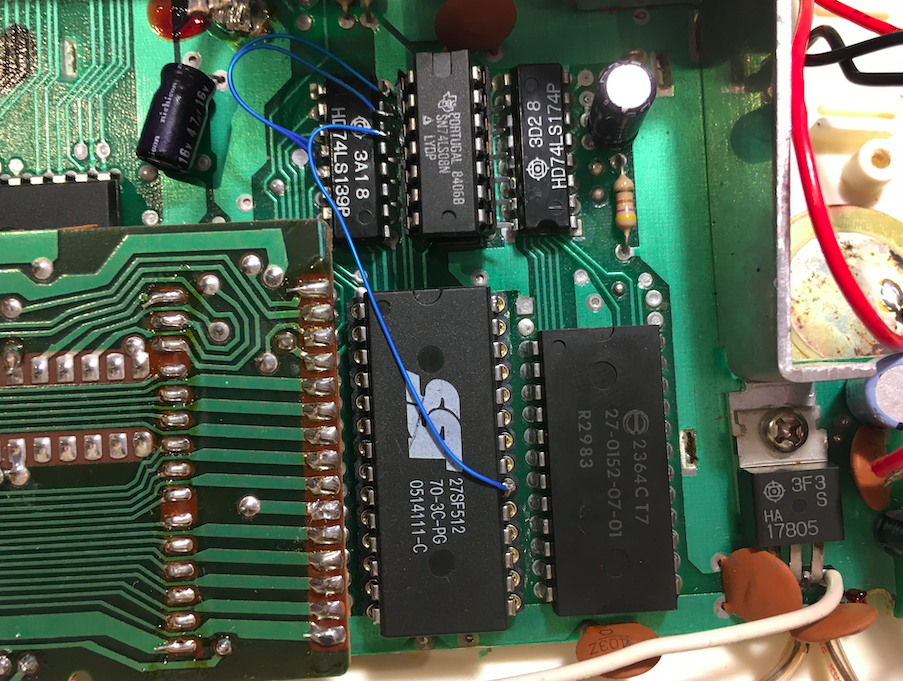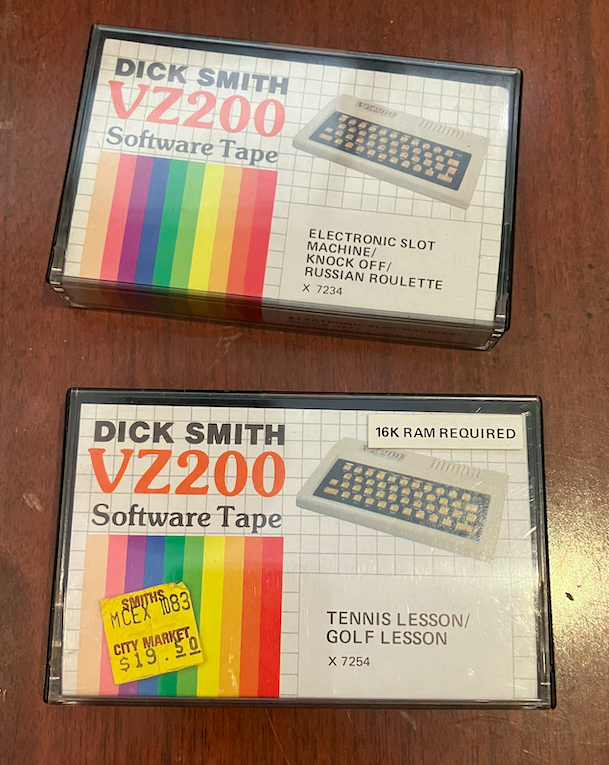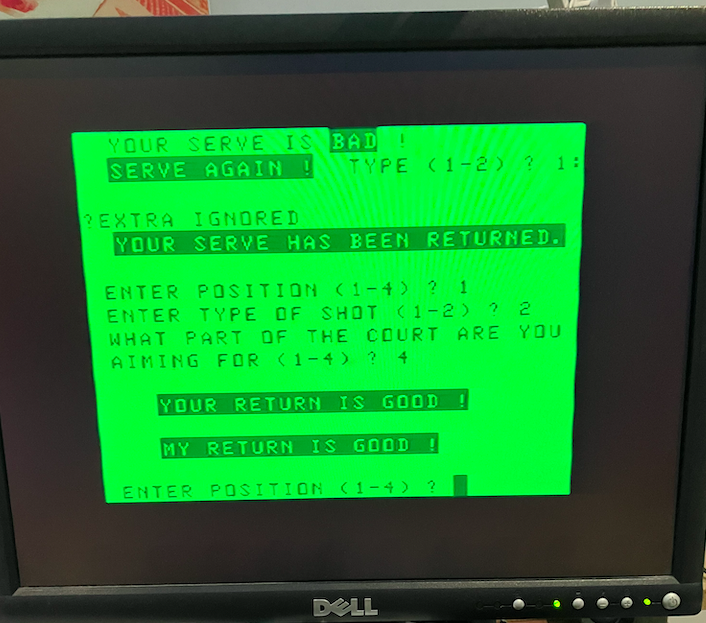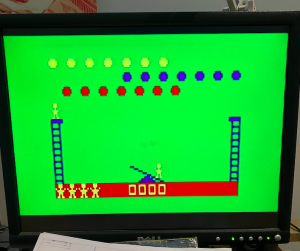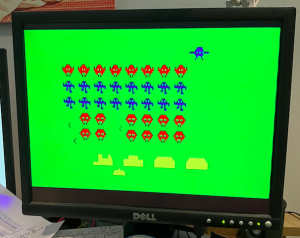The Dick Smith VZ200 is a cool little computer from 1983. I actually had one when I was a teenager, but my one was somehow pulled apart in the 80s, then packed in a box in a shed in Australia for some decades. When I recovered it later on, it had been used by rats as a bit of a nest/toilet and suffice to say I was not that motivated to restore it. Anyway, about a year ago I noticed this VZ200 on the local auction site (in the wrong section). It had the 16K expansion (which was completely unaffordable when I was a kid) as well as several cassettes and the user manual. Too good to pass by.
Here it is:
I think it was possibly inspired by the ZX Spectrum. It’s about the same size as it, and has the rubbery keyboard (which is one of the better rubbery keyboards out there in my opinion). It’s one of many 8 bit computers that came out in the early 80s. If you look on wikipedia it is the Vtech Laser 200 by Video Technology. They also did the Funvision/Creativision/Wizzard console around the same time. And essentially the computer was sold to various companies around the world that then rebadged. In Australia and New Zealand it was sold by Dick Smith (way before Dick Smith became whatever it is today) and it will always be the VZ200 to me.
The base system has a Z80A (3.58MHz I think) and 8KB of RAM. 2KB of that is shared between the CPU and the video chip (a 6847) and so you really only have 6KB for programs. Program loading is via cassette. It has an RF modulator and composite output. It has the ‘classic 6847 look’ which is quite possibly quite scary to some people. A static photo doesn’t quite capture exactly what it’s like. In the 80s, the 6847 was awesome because it was cheap, had a built in character ROM and was dead easy to hack together in your own homebrew computers to get a black and white picture out of (even in Australia on 50Hz where you would just turn the vertical hold knob all the way to the end).
But anyway, when I got mine it did not work. It was completely dead. Like most older computers the schematics are online. Dick Smith actually published a VZ200 Technical Manual. I originally desoldered the 2K RAM used for the video and replaced it but that did not help, then I ended up desoldering one of the two 8K mask ROMs. After desoldering this ROM I found it impossible to read it. I then put in a 28 pin socket (even though the mask ROMs are 24 pin, the PCB has a layout for 28 pin chips). I rewired the right most mask ROM so its permanently disabled (I could have desoldered it, but I didn’t want to heat the PCB anymore than I needed to) and rewired the new 28 pin socket so that it would accept a 27SF512 64K flash ROM (I just had a heap of these on hand). I programmed the two 8K VZ ROMs into the lower 16K of the 27SF512 and then added a 74LS08 to help with address decoding. I just got a 14 pin socket, bent the pins out except for p7 and p14, then soldered just pins 7 and 14 of the socket on top of the 74LS32. I put the 74LS08 in the socket then just used one AND gate of the LS08 to merge the two ROM chip selects into one. So you can see below the two ROM chip selects come out of the 74LS139 and go to the first AND gate of the 74LS08. The output of the AND gate goes to the _CE pin of the 27SF512. I also wired the _OE pin of 27SF512 to the Z80A _RD.
And I finally had a working VZ200.
The one I bought came with a few cassettes, most of which were not games. Among them were a ‘mailing list’ generator and a ‘word processor’.
Some of the more interesting cassettes were these two:
Notice how the ‘Tennis Lesson/Golf Lesson’ one requires the 16K expansion. Anyway, I was amazed that Tennis Lesson (and most likely Golf Lesson … even though I did not get it to load) were actually text based games.
Other games I was able to load by finding the CAS dump of a game and then using a tool called ‘appmake’ (part of z88dk) to convert to a wav file which I could play from a modern computer’s media player (I just used mplayer on linux).
appmake +vz -b CIRCUS.cas --audio mplayer CIRCUS.wav
Circus is actually pretty good. One weird thing to notice is the screen interference that occurs in most games (not visible in the photo). On a modern screen it sort of looks like ‘noisy’ random horizontal lines that aren’t too big. I actually think this is an interesting part of the VZ200 design. In most computers you would put some multiplexers or tri-state buffers to isolate the CPU and video chip from the RAM they share, but in the VZ200 this is achieved simply by some resistors on the address lines. The 6847 has an _MS pin that will tristate its address lines regardless of what its trying to do. This is just tied to a chip select, such that whenever the Z80A wants to access the 2K video RAM, _MS goes low and the Z80A does what it wants. Of course if the 6847 was trying to pull bytes from the 2K video RAM at the time, the screen output gets screwed up. There’s obviously ways around this by limited Z80A access to the horizontal and vertical blanking periods … but I don’t think many/any VZ games did that.
